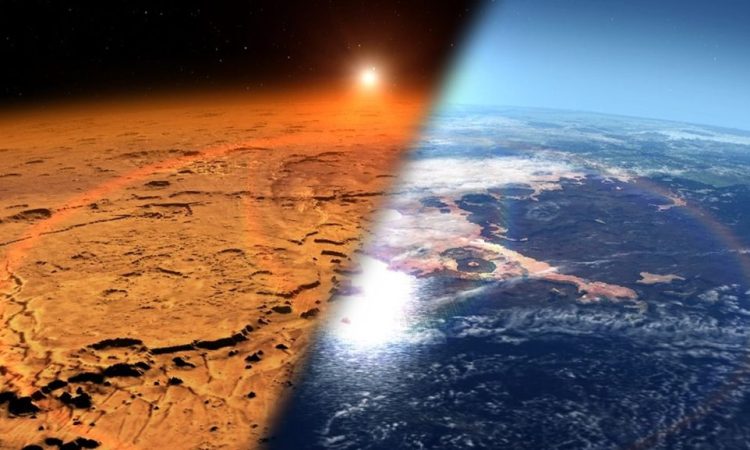
A new study on clay materials present on Mars could shed light on the disappearance of the atmosphere.
Years ago, in its youth, Mars appeared very similar to Earth. It was a warm planet with lakes, rivers and vast seas. It had a thick atmosphere with clouds and . One major difference is that its atmosphere was rich in carbon dioxide rather than oxygen. Then, about 3.5 billion years ago, much of thethe atmosphere disappeared and we didn’t understand how. A new study in Science Advances suggests that waters of Mars they may have been the key and that much of the ancient atmosphere it may be trapped in the clay beneath the surface of the .
Advertisement
Trapped carbon dioxide
The authors focused their paper on a clay mineral known as smectite. On Earth, smectite is produced via . As tectonic plates rise, they can pull material from the mantle to the surface, some of which is this type of clay. A characteristic of smectite is that it is full of small folds, and these nooks and crannies can trap carbon dioxide for billions of years.
In a previous study, the team demonstrated how smectite on Earth helped prevent our world from becoming a greenhouse planet by pulling carbon dioxide out of our early atmosphere. It is a process that continues today. Mars does not undergo tectonic activity, but smectite can be found everywhere on Mars, and the authors wondered whether it could resolve .
The challenge was to understand how so much smectite formed on Mars. Instead of lifting tectonic plates, it’s a series of chemical reactions. The authors suggest that water on Mars filtered through olivine, a silicate of iron and magnesium common on Earth, Mars and even Earth. The iron in olivine would have bonded to the oxygen in the water and released hydrogen.
This hydrogen would then react with carbon dioxide to form methane. Over time, this process would have transformed olivine into smectite, which would have trapped methane and carbon dioxide. Based on their calculations, the team claims that 80% of the ancient atmosphere is now trapped in Martian clay, leaving only .
An underground rich in elements
If this model is true, it could be a boon for . Not only will there be a lot of water below the surface, but there will also be large amounts of methane. The solution to water and fuel problems may be right under the feet of those early explorers, trapped in the nooks and crannies of common clay.
In its own small way, Passione Astronomia helps you understand how the universe works. And the universe works better if the people who are part of it are well informed: if they have read nonsense, lies, poisons, then it ends up as it ends up. It’s not going very well right now. This is why it is important that someone explains things well. Passion Astronomy does its best. !
Read more

